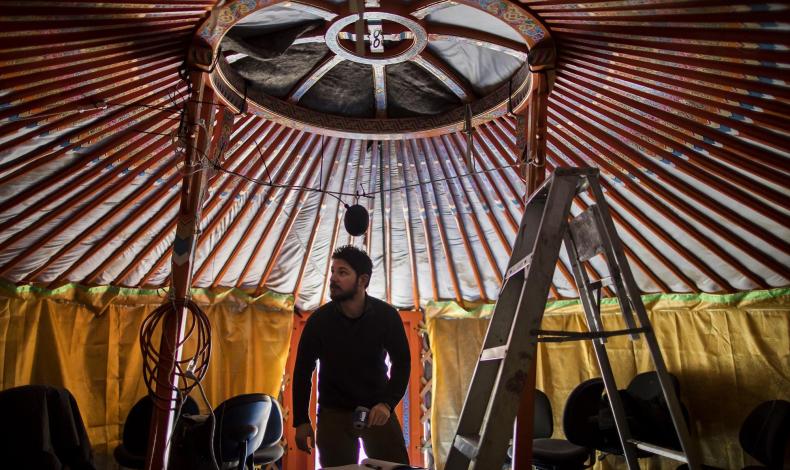Making Mongolian ger dwellings more energy-efficient

Not much is known about energy use and comfort in gers. A team from PennDesign’s Center for Environmental Building and Design hopes to change that with their on-the-ground research in the coldest capital city in the world, as well as in Philadelphia.
Gers, called yurts in Russian, are the traditional one-room round, tent dwellings of Mongolian herders. In the last twenty years, about half of Mongolia’s population has settled in permanent “ger districts” around the capital city of Ulaanbaatar, bringing their nomadic tents with them.
Mongolia has an extremely harsh winter climate—mid-winter temperatures in the capital regularly drop as low as minus-40 degrees Fahrenheit. Residents stay warm by burning wood and unrefined coal, making Ulaanbaatar one of the most polluted cities in the world and improvements in ger heating a top priority.
But not much formal information exists about the thermal characteristics of gers, in terms of energy use and interior comfort. Now, researchers from the Center for Environmental Building and Design(CEBD) in the School of Design, working with the Mongolian non-profit GerHub, are auditing these things to understand ger thermal behavior and identify opportunities to improve comfort, durability, and energy performance.
They arranged to install sensors in ger in Mongolia and, in February, constructed a research site at the Pennovation Center at 3401 Grays Ferry Ave., adjacent to Penn’s campus. Over spring break, the team traveled to Mongolia to study a group of buildings in Ulaanbaatar’s ger district and join a UNICEF project designing the “ger of the 21st Century.”
Read full article on PennToday.Upenn.edu.

